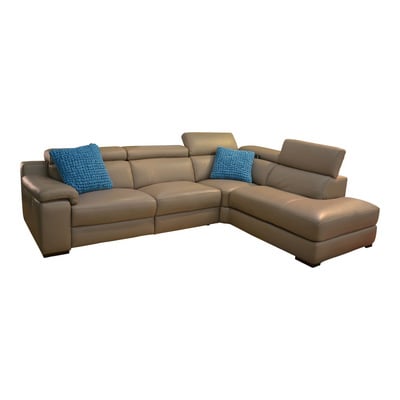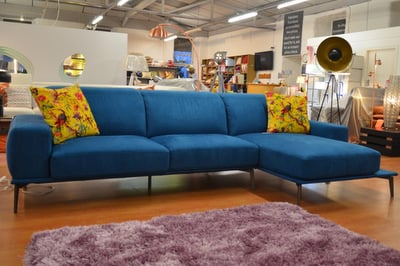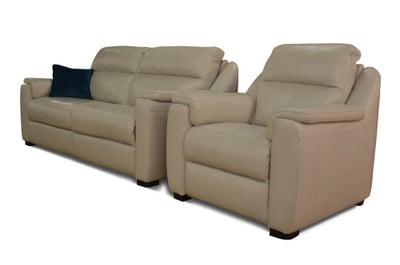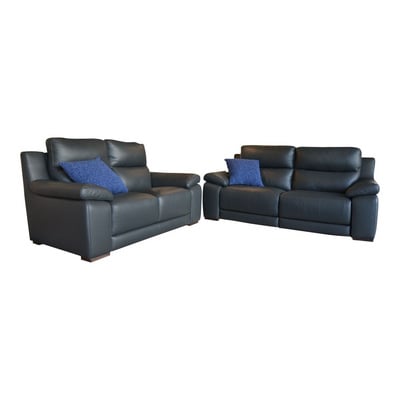Why Buy a Leather Sofa? The ultimate guide to leather sofas
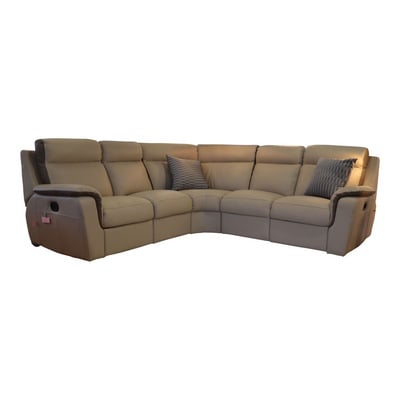
Why Buy a Leather Sofa?
One of the first questions people often consider when buying a new sofa is whether they want they want a leather sofa or a fabric sofa. Whether you’re looking into the pros and cons of buying leather sofas versus fabric sofas, or if you just have a few questions about the type of leather you want on your new sofa, you’ve come to the right place! We’ve written this handy guide to help answer your questions about leather sofas, so you can make an informed decision about your new settee.
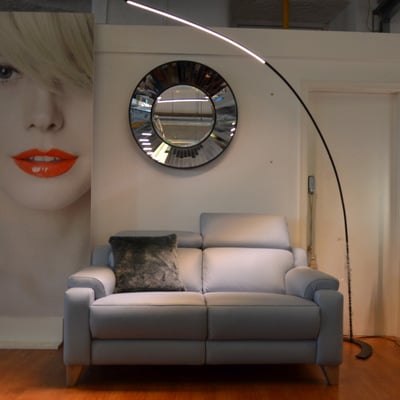
Should I buy a leather sofa or a fabric sofa? The pros and cons of buying a leather sofa.
The decision to buy a leather sofa or a fabric sofa is ultimately a matter of taste, so the most important thing to consider is whether leather or fabric would best fit in with your lifestyle. Do you want something cosy and warm, in bright vibrant colours? If you do, a fabric sofa will probably suit you best. Is your main concern that the sofa be durable and hard wearing? In that case, we would definitely recommend leather over fabric. The practicality of leather makes it a very popular choice for homes with dogs, small children, farms and rural properties, as it’s both hard wearing and a lot easier to clean than fabrics. Semi-aniline leather is one of the most hard-wearing covers available, and can be safely cleaned with soap flakes and warm water. For a more in-depth discussion of the leather types and other considerations just read on.
Why are leather sofas cold?
Have you found leather sofas to be cold to the touch? You may have experienced this when visiting a hotel or relative, or in your own home if you don’t have reliable heating. Leather has excellent insulating properties, which means it takes more time to heat up or to cool down than many fabrics. Thanks to the relatively smooth surface, when your skin makes contact with the leather you can find that it feels cool or even cold to the touch. If your home is well heated, you’re unlikely to ever notice this as a problem, as the leather will reach the same temperature as the rest of the room after an hour or so. People in hot climates may notice the opposite problem, as leather kept at a high temperature will retain the heat for some time – but in Britain you’re more likely to encounter this issue when getting into a hot car in summer than you are in your home.
Why are Italian leather sofas expensive?
Put simply, good quality leather costs quite a bit more than fabric. It requires a lot more work and expertise to manufacture leather, as it must be processed by the tannery before it is ready to use in manufacturing. Depending on the type of leather this will be a very involved process that takes up a lot of time, specialist equipment and expertise. The end result is a substance that is strong, supple, hard wearing and durable, so good quality leathers are usually good value for money. Even more so if you’re buying your new leather sofa as ex display or clearance! The highest quality leathers are produced in Italy, so it’s no surprise that Italian leather sofas are some of the most expensive sofas available.
Are all Italian leather sofas made in Italy?
In a word, no. You may be surprised to learn that many sofas advertised as being made from Italian leather are not actually made in Italy, even some from very popular Italian brands! While it’s usually still accurate to describe these as being “Italian leather”, the sofas themselves may be made anywhere in the world – most commonly China, Indonesia and Eastern Europe. For the highest quality Italian leather sofas, you want to be looking for something that is described specifically as made in Italy, not just “Italian leather”. Unfortunately, you can’t rely on the brand names to guide you. Not only are there Italian brands who make some of their products in other countries, but many retailers rename genuine Italian brands to prevent customers from being able to do an accurate price comparison. We’ve written a post about on price comparisons here – take a look!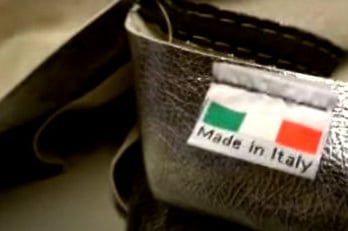
Are all Italian leather sofas made from Italian leather?
Not always! In order to keep prices low while still maintaining the appearance of a good deal, some companies will sell sofas that have leather on the front and seating surfaces, but are faux leather or “leather match” on the back. We’ve given a more detailed explanation of what is – and what isn’t – real leather below, but faux leather by its’ very nature is not leather and certainly not Italian leather. Even if it is made in Italy! Faux leather or leather match is much cheaper than real leather, less durable and with a noticeably different texture. Over time, the leather on the front and seating surfaces will wear differently to the faux leather on the back, developing more of a contrast. For this reason, we recommend getting a good quality leather sofa that is leather on every surface if you want something that will last a reasonable amount of time.
Can you get vegan Italian leather sofas?
There is no such thing as vegan leather, Italian or not. That said, while leather is still the most popular option for Italian sofas on sale in the UK, most Italian manufacturers do offer their sofas in a variety of different fabric options as well – usually very high-quality ones. In the past few years some very attractive new ranges have come out featuring a luxurious feeling suede-effect fabric that has the appearance of a large, open grain full aniline suede while being much easier to clean and care for.
What do the different grades of leather mean?
Every sofa manufacturer uses different terms to describe their leather grades, which can make it difficult to compare between different brands. Generally speaking, leather grades are grouped together based on the price, to make it easier for customers to choose something they like in the different price points. Leathers may be more or less expensive based on their thickness, whether they have a natural or artificial grain, what kind of dye treatment they’ve been exposed to, and what kind of finish they have. Before we get into details of individual leather grades, here’s a few key terms you may encounter while looking into the different types of leather.
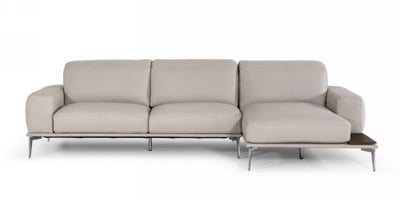
What is the difference between full grain leather and top grain leather?
Full grain leather is an exceedingly high-quality leather with a completely natural grain. The leather will show variations in the size and texture of the grain as part of the natural beauty of the leather, as well as small scars and creases from the life of the animal. This type of leather tends to be thicker and is most commonly used in combination with a full aniline or semi-aniline dye. In contrast, top grain leather is very good quality, but the grain has been treated to give it a more even appearance. This can vary quite a bit depending on the leather grade, from lightly sanding out the occasional mark or scar all the way to shaving off the top layer and imprinting a uniform grain pattern on to the leather. The advantage of top grain leather versus full grain leather is that it gives a more uniform appearance, and it is one of the most commonly used types of leather in the furniture industry.
Aniline or Full Aniline Leather
Full aniline leather is dyed the full thickness through and does not have a water-resistant finish. It is designed to develop a patina over time, with a worn-in look that can be very attractive. It does however require care to keep it looking good, and will stain if liquids are spilled on it. Aniline leather may be left with an open finish, or finished lightly with beeswax or oil for a classic look. Because of the expense aniline leathers tend to be thicker, with a natural grain and may show natural marks from the life of the animal.
Semi-aniline leather
The terms “semi-aniline” and “aniline” refer to the dying process so much like full aniline leather, semi-aniline is dyed the full thickness through. Unlike full aniline leather it is then coated with a water-resistant finish that leaves it much easier to care for, making semi-aniline the most practical – and popular – choice for many families.
What is “Genuine Leather”?
A term more commonly encountered when looking at clothing and accessories, genuine leather is pretty meaningless in the furniture industry! It simply means that something is made from leather, and gives no useful information about the quality.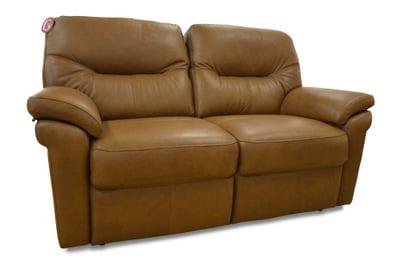
Famous British Brand Leathers in P Grade, N Grade, L Grade – what do these mean?
A very famous British manufacturer uses these leather grades in their product descriptions for their sofas. All of their leathers are top grain, with varying amounts of grain correction and different finishes. The letter grades are as follows:
P Grade Leather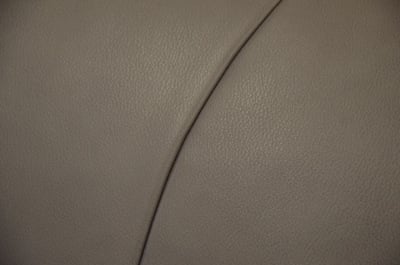
These leathers are called “Capri”, with colour codes designated by the letter P. Capri grade leathers are semi-aniline, thick and flexible with a largely natural grain, and most of the natural markings and colour variations still visible in the leather. Not surprisingly it is also their most expensive range, commonly used in displays of their flagship models such as the Washington and Mistral sofas.
L Grade Leather
Also called “Cambridge”, these offer a similar range of colours and finishes to the P grade leathers. The grain is lightly corrected so that most of the natural features are still visible, and the colour is lightly pigmented with good light fastness and durability. Slightly less expensive than the P grade leathers as they are not quite as thick, the L Grade leathers are very popular.
N Grade Leather
These leathers are called “Dallas”, with colour codes beginning with the letter N. The Dallas grade leathers are semi-aniline with a uniform grain and random shading pattern designed to add interest and texture. They are resistant to staining and fading due to light, and easy to clean.
H Grade Leather
These leathers are called “Oxford”, designated by the letter H. Oxford grade leathers are semi-aniline with a uniform grain and solid colour, resistant to staining and light damage.
K Grade Leather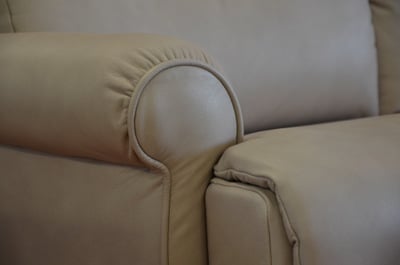
These leathers are called “Regent”. A good quality semi-aniline leather with a more heavily pigmented top coating, uniform grain and a shaded or two-tone colour effect to add interest. The Regent leathers are designed to be easy to clean and care for.
What do Italian leather grades mean on sofas?
A lot of Italian leather manufacturers use different grading systems for leathers, which can become confusing. These aren’t a direct measurement of the thickness but as a general rule the higher the number, or the further down the alphabet the letter, the higher the quality of the leather. If you’re unsure of whether a particular grade is higher or lower, you can usually tell from the price alone, but we recommend having a thorough read of all the information provided to you about the product before making a decision. You should look to see what the retailer or manufacturer has to say about the dying process, whether it is full or semi-aniline leather, full grain or top grain leather, and whether it requires any specialist care.
One of the most popular brands we sell use a simple numbered grading system. As we sell a lot of ex display models from this range, we only get the more durable grades that are used in displays. These are typically graded from category 15 which is reasonably thick, with a lightly corrected or uncorrected grain, pigmented finish and flexible, to category 60 which is noticeably much thicker with a natural grain, lightly pigmented finish and incredibly durable.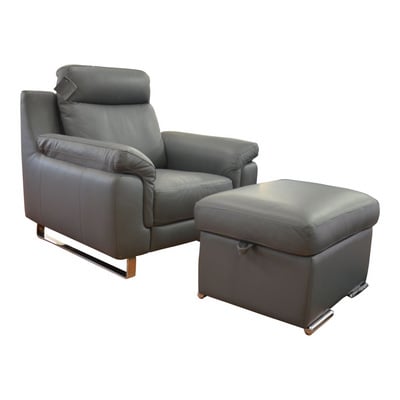
Are higher grade leather sofas more likely to wrinkle or sag?
Not at all, in fact the opposite is true! Higher grade leathers are, generally speaking, more durable and less likely to sag or wrinkle after use. Lower grade, thinner leathers are more likely to stretch and so more prone to puddling or wrinkles. The sole exception to this rule is full aniline leather which, although no more likely to wrinkle than any other kind of leather, is susceptible to marking via liquid damage as it is not sealed and waterproof.
What is leather match, eco-leather or faux-leather?
As far as we’re concerned, these are all different words for the same product – artificial or fake leather. Usually made from PVC or, if slightly higher quality a breathable fabric, these are material designed to look like leather.
Why do leather sofas peel? The question you should be asking is, what is bonded leather?
Bonded leather is possibly the least durable material used in upholstery. Consisting of a top layer of leather fragments felted together with adhesive over a fabric backing, it only lasts as long as the adhesive does. Once the glue fails, the leather peels off in big flakes, revealing an ugly plain fabric back. As you can probably tell, we don’t stock anything made with bonded leather for this very reason! Bonded leather is often erroneously referred to as “leather” and this confusion is the source of a large number of complaints about misleading furniture adverts. If you’ve ever seen a sofa that looks like it has a bad case of peeling sunburn, this is the cause. Possibly one of the most wasteful products in the furniture industry, bonded leather cannot be repaired and does not last long even under normal use.
Why do leather sofas fade?
Fading of the colour on leather sofas usually only occurs when they are placed directly in bright sunlight for an extended period of time. It’s not something we see too much of in Lancashire! Good quality leather sofas are treated to protect them from fading due to UV damage as much as possible, but in very strong sunlight it’s not always possible to prevent this. Other things that can cause leather to fade prematurely include chemical damage from unsuitable cleaning products and cosmetics, so for this reason we recommend cleaning with plain soap and water only. Over a long period of time, you may notice the leather becoming slightly lighter in areas that see the most wear, usually on the seats. This can give your sofa a more relaxed, lived-in appearance, and is usually only noticeable on darker or brown leather sofas.
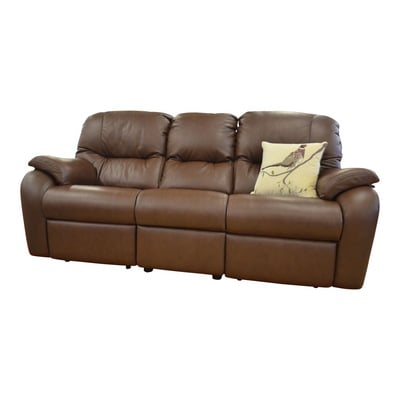
What’s the best kind of leather sofa?
This will absolutely depend on what you want from your new sofa, whether you’re looking for something supportive and cost or would prefer something a bit more modern and stylish. Leather sofas come in all makes, models and sizes, so there’s always plenty of choice!
As always, we’re here to help with all of your furniture related enquiries. If you have any questions please get in touch! You can call our showroom on 01200444361 any time we’re open, or email [email protected] for a fast response.


